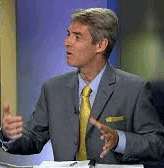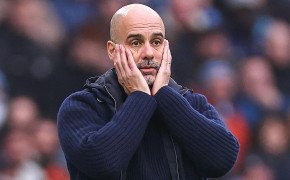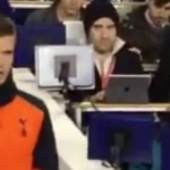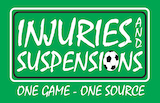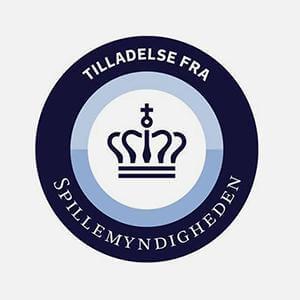The 50th anniversary of Celtic’s 2-1 European Cup final win over Inter has been much celebrated – and rightly so. It is even more significant than is widely believed.
Celtic, coming from behind and breaking down the favourites with wave after wave of attacks, became European champions with an entire team that had grown up in and around Glasgow - the type of achievement which is impossible to imagine in these globalised times. But if on one hand their triumph harked backwards, on the other it pointed to the future.
Celtic were heralded as the first British winners of the trophy we now know as the Champions League – Manchester United, of course, followed the next year. But they were much more. They were the first northern European winners and they ushered in a new era. Up to that point, the previous winners had all come from the south – Real Madrid, Benfica and the Milan pair. From Celtic’s win in 1967 until Liverpool’s in 1984 (with one exception – Milan in 1969), the trophy stayed in the north, as the Netherlands, Germany and England all had spells of dominance.
The German and Dutch leagues had recently turned professional, while Britain had abolished the maximum wage in the early 1960s. And with new, more collective tactical ideas and hard-running physical vigour, the north replaced the south as the dominant force. It leaves us with one of football’s great ‘what ifs.’
After the European Cup got under way in 1955, the South Americans quickly decided they needed a similar club competition of their own. And so in 1960 the Copa Libertadores was born – with the mission of not only imitating Europe, but also challenging it. The winners of the two continental trophies would then meet each other on a home and away basis, with the winner claiming the right to be called world champion – very harsh, perhaps, on the other continents, but there seems little doubt that club football in Europe and South America was of a far higher standard than elsewhere.
The two continents were also nicely balanced. There were South Americans in Europe – it is hard to imagine the European Cup getting off to such a smooth start without Real Madrid’s great Argentine, Alfredo Di Stefano. But there was nothing like the exodus of the contemporary age. The South American clubs could compete in financial terms – Bobby Charlton tells of an approach from Boca Juniors in the early 1960s offering to pay him significantly more than he was earning in England.
And so the meetings of the two continental champions were fascinating, epic affairs. In the first, in 1960, Real Madrid thrashed Penarol of Uruguay. When they met again six years later Penarol won home and away. In between there were three South American wins and two for Europe. The competition was the stage for what Pele considers his greatest ever performance. His Santos side had beaten Benfica 3-2 in Brazil – a precarious lead to take to Portugal. But Pele ran riot as Santos scored five.
These annual duels had the potential to become one of the main events in football’s calendar. They had everything: glamour and excitement, a massively prestigious trophy at stake and the potential to showcase the greatest performances from the best players around. Instead, the entire experiment has been largely forgotten.
As the baton changed hands in Europe from south to north, a significant change was happening on the other side of the Atlantic. Santos, with Pele and a glorious supporting cast, pulled out of the Libertadores, and for a couple of years there was no Brazilian representation. The main reason was financial. Before an age of mass TV, it was impossible to make money from a South America-wide competition – travel costs were simply too expensive. And so with the Brazilians looking elsewhere, the field was open for the Argentines to dominate the tournament – at a moment when their game was entering a cynical phase.
In the 1940s Argentina had played the most inspiring, romantic football in the world – Di Stefano was the last great product of their golden age. They spent the 1950s in isolation, and received a huge shock when they stepped back in the arena for the 1958 World Cup. By now they were horribly off the pace, and fell to a humiliating 6-1 defeat by Czechoslovakia.
The response was to shelve romantic ideas and replace them with cold, hard, win-at-all costs pragmatism. This was the school of football that now met the European champions. There were problems from the off; Celtic’s encounter with Racing in 1967 proved a bruiser, with violence on both the field and the terraces. Manchester United were left with a similar bad taste after playing the notorious Estudiantes the following year.
There were almost certainly some faults on both sides. The northern Europeans played a physical game, with ‘letting him know you’re there’ a camouflage for kicking. But it seems fair to assume that the South American champions were worse – if only from the fact that the Europeans swiftly concluded that the annual meeting, which had started in such promising style, was not worth the bother. In the 1970s there were only two years (1972 and 1976) when the European champions decided to take part. Every other time either the European runner-up took part or the games were not held.
From 1980 there was an annual match in Japan, which since 2005 has grown into a genuine Club World Cup, including the champions from all the continents. The imbalance between Europe and the rest makes it hard for the competition to attract much attention, but in the long-term things might change with the rise of MLS and the Chinese Super League. With a few more years of development, a worldwide audience might be interested in seeing how teams from these leagues fare in competitive circumstances against the European giants.
In the late 1960s the problem was violence. These days it is lack of competitive balance. But with the money spreading out into promising new leagues, the future of the club game is surely global.

